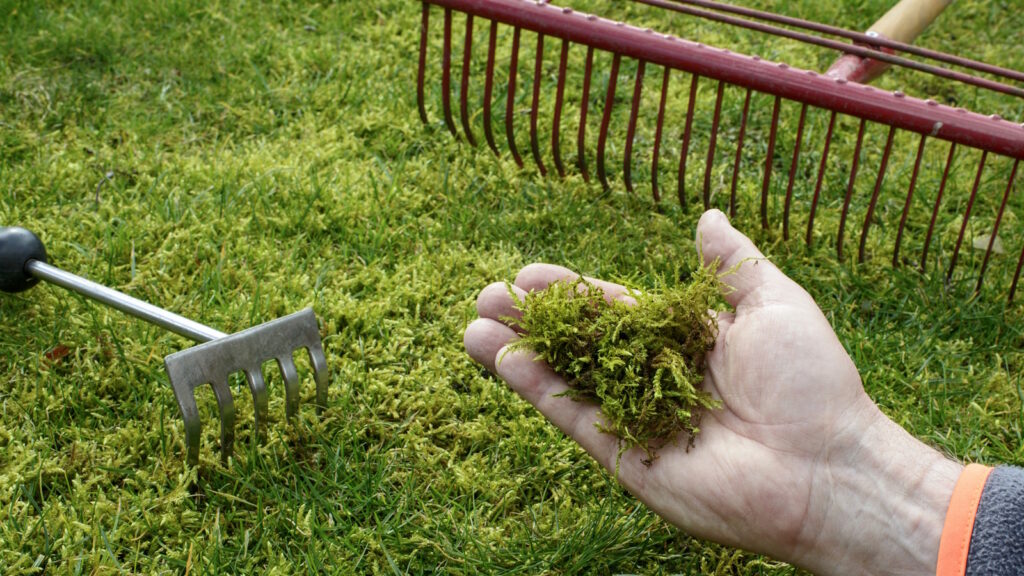Maintaining a lush, green lawn is a point of pride for many homeowners. However, moss can often invade and take over, leaving unsightly patches that detract from the beauty of your yard. While moss itself isn’t harmful, it can indicate underlying issues with your lawn’s health. Here’s a comprehensive guide on how to get rid of moss and prevent it from returning.
Understanding Moss
Moss is a non-vascular plant that thrives in damp, shady, and compacted soil conditions. It lacks true roots and spreads quickly in areas where grass struggles to grow. To effectively combat moss, it’s essential to address the conditions that allow it to flourish.
Step-by-Step Guide to Removing Moss
Identify the Problem Areas:
Walk through your lawn and identify patches of moss. These areas are typically damp, shaded, and may have compacted soil.
Test Your Soil:
Conduct a soil test to determine its pH level. Moss prefers acidic soil (pH below 6.0). If your soil is too acidic, consider applying lime to raise the pH to a more neutral level, which is conducive to grass growth.
Improve Drainage:
Moss thrives in waterlogged areas. Ensure your lawn has proper drainage by aerating the soil. This process involves perforating the soil with small holes to allow air, water, and nutrients to penetrate the grass roots.
Increase Sunlight Exposure:
Trim back overhanging tree branches and shrubs to increase sunlight exposure to the mossy areas. Grass requires more sunlight than moss, so improving light conditions will favor grass growth.
Scarify the Lawn:
Use a garden rake or a scarifier to physically remove the moss from your lawn. This process not only removes the moss but also helps to break up the soil surface, encouraging better air circulation and drainage.
Apply Moss Killer:
Choose a moss killer appropriate for your lawn type. Follow the manufacturer’s instructions carefully. Moss killers typically contain iron sulfate or ferrous ammonium sulfate, which can be effective in killing moss. Be cautious, as these chemicals can stain concrete and other surfaces.
Overseed the Lawn:
After removing the moss, overseed the lawn with grass seed to encourage thick, healthy grass growth.
Choose a grass seed mix that is suitable for your climate and the specific conditions of your lawn (e.g., shade-tolerant varieties for shaded areas).
Fertilize the Lawn:
Apply a balanced lawn fertilizer to provide essential nutrients for grass growth. This helps the grass to establish quickly and outcompete any remaining moss.
Preventing Moss from Returning
Maintain Proper Soil pH:
Regularly test your soil’s pH and adjust it as needed. A pH between 6.0 and 7.0 is ideal for most lawn grasses.
Improve Lawn Care Practices:
Mow your lawn regularly, but avoid cutting the grass too short, as this can stress the grass and encourage moss growth. Aim for a mowing height of 2.5 to 3.5 inches.
Water your lawn deeply but infrequently. Overwatering can create conditions favorable to moss.
Aerate Annually:
Aerate your lawn at least once a year to reduce soil compaction and improve drainage. This will help prevent the conditions that moss thrives in.
Monitor Shaded Areas:
Keep an eye on shaded areas and trim back vegetation as needed to ensure sufficient sunlight reaches the grass.
Regular Maintenance:
Regularly remove debris, such as leaves and thatch, that can create damp, shaded conditions ideal for moss growth.
By understanding the conditions that promote moss growth and taking proactive steps to improve your lawn’s health, you can effectively get rid of moss and enjoy a vibrant, green lawn. Consistent lawn care and maintenance are key to preventing moss from returning and ensuring your lawn remains healthy and beautiful.
Addressing Persistent Moss Issues
Despite your best efforts, some lawns may still struggle with persistent moss problems. If you find that moss continues to invade your lawn, consider these additional measures:
Evaluate Soil Compaction and Health:
Persistent moss can be a sign of severely compacted soil or underlying soil health issues. Consider hiring a professional to conduct a thorough soil analysis and recommend specific soil amendments or treatments.
Consider Lawn Alternatives:
In areas where grass struggles to grow due to deep shade or constant dampness, it might be worth considering alternative ground covers. Plants such as shade-tolerant perennials, ferns, or ground covers like creeping thyme can provide a green, attractive alternative to traditional grass.
Reseed with Shade-Tolerant Grass:
For areas that are consistently shaded, reseed with a grass variety that thrives in low-light conditions. Fine fescues, for example, are more shade-tolerant and can outcompete moss in these environments.
Professional Help
If you find moss management overwhelming or if the problem persists despite your efforts, consider consulting a lawn care professional. Professionals can provide specialized treatments, advanced soil testing, and tailored advice to help you achieve the best results for your lawn.
Seasonal Tips for Moss Control
Spring
Aeration: Aerate your lawn to alleviate soil compaction and improve root growth.
Overseeding: Reseed any bare or thin areas to promote dense grass growth.
Fertilization: Apply a balanced fertilizer to support new grass growth.
Summer
Watering: Water deeply and infrequently to encourage deep root growth.
Mowing: Keep your mower blades sharp and maintain an appropriate mowing height.
Fall
Lime Application: Test soil pH and apply lime if needed to correct soil acidity.
Leaf Removal: Regularly remove fallen leaves to prevent damp, shaded conditions.
Winter
Lawn Care Planning: Plan for spring lawn care activities, including aeration and overseeding.
Eliminating moss from your lawn requires a combination of improving lawn conditions, regular maintenance, and, sometimes, chemical treatments. By addressing the underlying issues that promote moss growth and fostering a healthy lawn environment, you can successfully rid your lawn of moss and enjoy a lush, green landscape. Consistency and vigilance are key, as is adapting your lawn care practices to the specific needs of your yard.
By following these guidelines and remaining proactive, you can ensure that your lawn stays moss-free and beautiful year-round.






